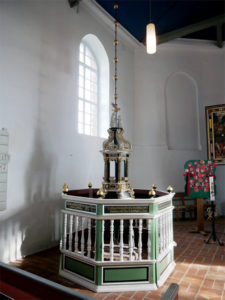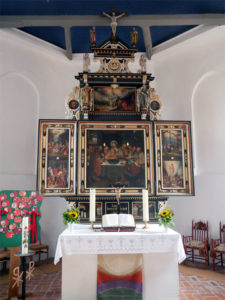Hollern St Mauritius










































































































































































St Mauritius-Kirche Hollern
Where to find this church
Church Information
St Mauritius-Kirche is located in Hollern, a village in Niedersachsen. It is situated about a mile away from the southern shore of the river Elbe, and about 4 miles south-east of the town of Stade.
This church is locked with no keyholder listed
This parish is most unwelcoming to visitors, and there is no response to enquiries!
* denotes external links that open in a new window



Visiting Hollern St Mauritius
A word in advance about this church: I have never experienced a parish that is so unfriendly or even almost hostile to visitors! As this church is not exactly on our doorstep, and I wanted to avoid the disappointment of finding a locked church, I wrote to the parish office before our planned visit, but received a message of absence from the parish secretary asking me to write to the parish priest, which I did. There was no response at all. Then I tried by phone, but the line was completely dead. So I called the neighbouring parish, which belongs to the same church district. Here I could at least reach someone who gave me the telephone number of the sexton, but of course she was not available either. So we decided to go to the church on a Sunday when there was a service, so that we could visit the church from the inside after the service. When we wanted to enter the church at the end of the service, we were asked – obviously by the sexton – to hurry up with a very unfriendly “but hurry, I want to go home now!” But I discreetly ignored this, especially as the remaining members of the congregation, including the sexton, were in no hurry to leave the church and were still chatting in the sacristy. So there didn’t seem to be much of a hurry. But they were all the quicker to slam the door behind us and lock it again after we had gone back outside! So that we wouldn’t dare coming back in! Thus, the church is not normally open to visitors, obviously they have decided to run it as a museum that is not open to the public, only opened for services every few weeks. Is that really the point of churches? Be that as it may, should you wish to visit the church, in all likelihood you will not be able to view the interior.
But now to the history of the church: the settlement of the region by Dutch settlers probably began around the year 1135; the first written evidence of a church is found around the year 1250, whereby the round tower was probably built of fieldstones as early as the 12th century and is today the oldest surviving building in the “Alte Land” (the name of the region it is located in). It is 25 metres high and, like the church building, was built on a mound to protect it against storm tides. Originally, it probably also served as a defence tower, as indicated by loopholes in the masonry, and as a shelter for the community. Since 1983/84, it has been completely rebuilt in brick, crowned by an octagonal helmet with wooden shingles dating from 1778. Of the original Gothic nave and chancel of the church, only foundation walls remain today, on which the present church was completely rebuilt in red brick in 1901.
The church’s patron saint is Saint Mauritius, according to Christian legend the leader of the Theban Legion of Christian soldiers who refused to obey Emperor Maximianus in the persecution of Christians and died a martyr’s death with their leader.
Inside, a blue-painted, semi-circular wooden barrel ceiling with reliefs of the sun, moon and stars spans a single-nave room. The whitewashed walls are plastered, and there is a gallery on the north and west sides.
On the west gallery is the baroque organ by Arp Schnitger – one of the most famous organ builders of his time – dating from 1688 to 1690, which replaced the predecessor instrument by Dirck Hoyer from 1575. The organ was rebuilt for the first time in 1858, and the end of the baroque work of art followed in the 1960s. Due to a lack of knowledge of baroque instrumental art, the old technique was defaced to such an extent that the sound was disastrous and the appearance catastrophic. In 2010, a consistent reconstruction to the original condition began, so that the organ could be rededicated on 28 August 2011. The current specification corresponds again to the condition of 1690, about half of the original pipes and most of the case have been preserved.
On the south wall is the pulpit from 1670; four sides of an octagon form the parapet, the oil paintings show the four evangelists. The cornice has an inscription: 1671 VERBUM DOMINI MANET IN AETERNUM (The Word of the Lord abides for ever). The story of Pentecost is depicted on the underside of the tester.
In a niche to the right above the pulpit stands a small statue of St. Mauritius as a crowned knight with a sword, his face black.
The Renaissance altar, a work from 1570, is bricked up and plastered. The altarpiece shows paintings, in the centre the Last Supper, the washing of the feet and the Garden of Gethsemane. The two wings depict the Adoration of the Shepherds, the Scourging of Jesus, the Dousing in Vinegar under the Cross and the Resurrection. Above the central panel is a picture of the Last Judgement, next to it on either side are fully sculpted figures of the apostles Peter and Paul, and Martin Luther and Melanchton are depicted in medallions. The altar is crowned by a sprinkled pediment with a crucifixion group.
The baptismal font dates from the middle of the 14th century. The 40 cm high bronze font rests on the shoulders of three male, youthful figures standing on a brick plinth. The wooden baptismal lid with its richly decorated, tower-like top and two bearded sculptures depicting the baptism of Christ was made around 1660. The baptismal font is moved by means of an iron rod attached to it, which is extended to the attic and connected there with a counterweight. The baptismal font is enclosed by baptismal barriers from 1572 arranged in an octagon.
The 17th century baptismal angel, now suspended in the middle of the church under the barrel vault, was probably originally connected to the baptismal font in such a way that one lowered when the other was lifted.
The oil painting on the south wall shows the Sermon on the Mount, and the chandelier with four arms was made in 1681.
Conclusion: locked church in a parish most unwelcoming to visitors!



